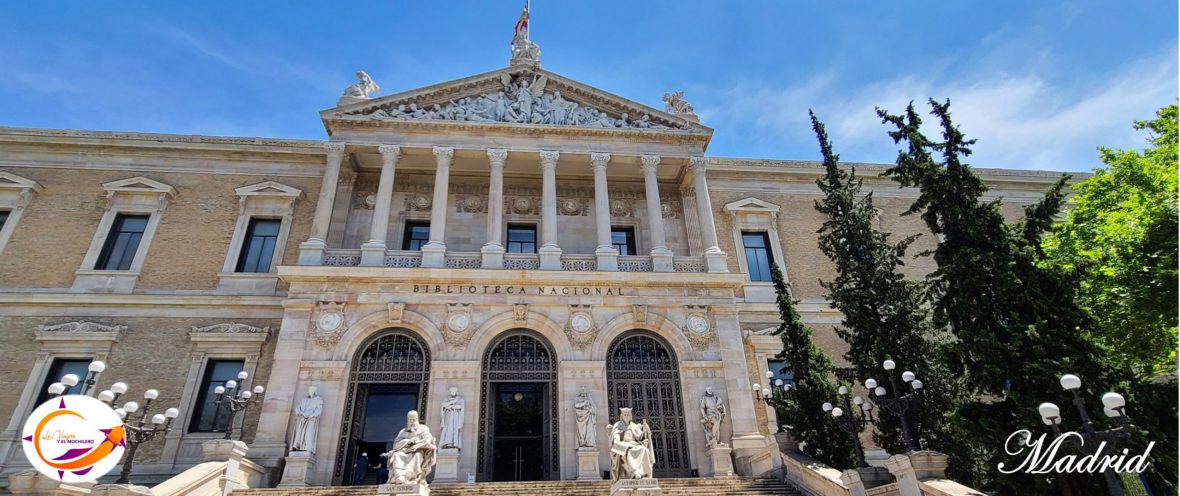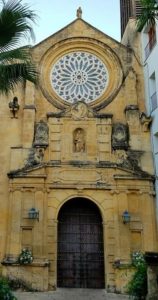 During our visit to Córdoba, we came across the Royal Church of Saint Paul, one of the most outstanding of the city’s center. It is among the first to be established by the Dominican Monks in Spain. It became an important house of study in which great missionaries were developed, such as Brother Francisco de Córdoba, First Martyr of the Evangelization in the Americas, Brother Tomás de San Martín, who placed the first stone of the University of Hispanola and founded the University of Lima (Peru) and Brother Jerónimo de Loaysa, first archbishop of Lime (Peru). Continue reading “Royal Church of Saint Paul in Córdoba”
During our visit to Córdoba, we came across the Royal Church of Saint Paul, one of the most outstanding of the city’s center. It is among the first to be established by the Dominican Monks in Spain. It became an important house of study in which great missionaries were developed, such as Brother Francisco de Córdoba, First Martyr of the Evangelization in the Americas, Brother Tomás de San Martín, who placed the first stone of the University of Hispanola and founded the University of Lima (Peru) and Brother Jerónimo de Loaysa, first archbishop of Lime (Peru). Continue reading “Royal Church of Saint Paul in Córdoba”
Category: Briefs
“El Cid Campeador” in Seville
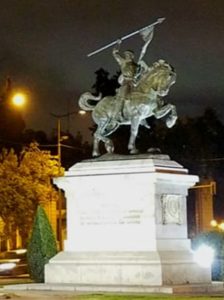 A night view of the imposing sculpture of “El Cid Campeador” in Seville, Spain. Mounted on his steed “Bavieca” we have Rodrigo Díaz de Vivar (“El Cid”) in a triumphant stance. The sculptor Anna Huntington, spouse of the Hispanist and multimillionaire Archer Milton Huntington, founder of the Hispanic Society of America of New York, donated this bronze statue to the city of Seville. Continue reading ““El Cid Campeador” in Seville”
A night view of the imposing sculpture of “El Cid Campeador” in Seville, Spain. Mounted on his steed “Bavieca” we have Rodrigo Díaz de Vivar (“El Cid”) in a triumphant stance. The sculptor Anna Huntington, spouse of the Hispanist and multimillionaire Archer Milton Huntington, founder of the Hispanic Society of America of New York, donated this bronze statue to the city of Seville. Continue reading ““El Cid Campeador” in Seville”
The Holy Prime Cathedral*
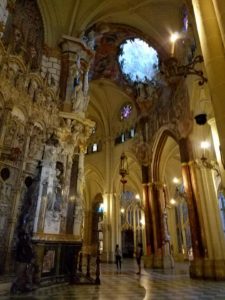
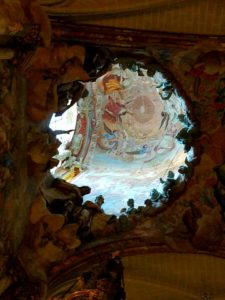 “Narciso Tomé, Master Architect of this “Santa Catedral Primada” (Holy Prime Cathedral*), drew, sculpted and also painted by himself Continue reading “The Holy Prime Cathedral*”
“Narciso Tomé, Master Architect of this “Santa Catedral Primada” (Holy Prime Cathedral*), drew, sculpted and also painted by himself Continue reading “The Holy Prime Cathedral*”
The Patio of the “Doncellas”
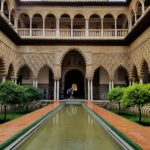 It is hard to believe that what we now-a-day know as the “Patio de las Doncellas” in the “Real Alcázar ” of Seville was in part, once buried beneath a marble pavement. The structure’s bedding and a pond were uncovered as an archaeological finding in 2002. As a result of this, the structure of this old Moorish garden was revealed, making it a very relevant event for the archaeological history of medieval Spain. Continue reading “The Patio of the “Doncellas””
It is hard to believe that what we now-a-day know as the “Patio de las Doncellas” in the “Real Alcázar ” of Seville was in part, once buried beneath a marble pavement. The structure’s bedding and a pond were uncovered as an archaeological finding in 2002. As a result of this, the structure of this old Moorish garden was revealed, making it a very relevant event for the archaeological history of medieval Spain. Continue reading “The Patio of the “Doncellas””
Fountains in Cordoba
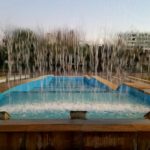 As we strolled back to the Bus terminal in Cordoba along side the ” Avenida de la Libertad”, we cam across a series of fabulous and modern fountains. It sure must be refreshing during the summer. Continue reading “Fountains in Cordoba”
As we strolled back to the Bus terminal in Cordoba along side the ” Avenida de la Libertad”, we cam across a series of fabulous and modern fountains. It sure must be refreshing during the summer. Continue reading “Fountains in Cordoba”
Statue of the Arts
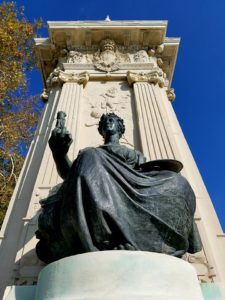 Shown is one of the statues we find at the Alfonso XII Monument in the “Buen Retiro” Park in Madrid. Created by the sculptor, Joaquín Bilbao, the Statue of the Arts is represented the figure of a woman seated over the chapiter, holding in her right hand a small statue of Victoria de Samotracia and in her left hand a painter’s palette. These elements symbolize Architecture, Sculpture and Painting. Continue reading “Statue of the Arts”
Shown is one of the statues we find at the Alfonso XII Monument in the “Buen Retiro” Park in Madrid. Created by the sculptor, Joaquín Bilbao, the Statue of the Arts is represented the figure of a woman seated over the chapiter, holding in her right hand a small statue of Victoria de Samotracia and in her left hand a painter’s palette. These elements symbolize Architecture, Sculpture and Painting. Continue reading “Statue of the Arts”
Central High School of Visual Arts

The Central High School for Visual Arts in San Juan, Puerto Rico was built in 1918. It was designed by the Architects Pedro Adolfo de Castro, Francisco Roldán and Rafael Carmoega. The small palace was constructed along the Juan Ponce de Leon Avenue. Its architectural design is highlighted by a impressive portal supported with Corinthian columns. The first students were received in the east wing in 1923, The school was originally named as the Central High School of Porto Rico in 1925. In 1976, the structure was registered as a National Monument.
Picture LVYEM
Railroad Station of Toledo
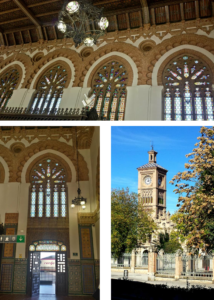
Inaugurated in 1919, Toledo’s Railroad Station was declared as a Place of Cultural Interes; in the category of monuments on November 21, 1991. This is the work of Architect Narciso Clavería and his neo-Moorish style. Bricks, stone, iron and cement was used in its construction. In 2005 it was restored with the advent of the high speed trains. It is located to the east of the city. Continue reading “Railroad Station of Toledo”
Altarpiece of the Cathedral of Seville
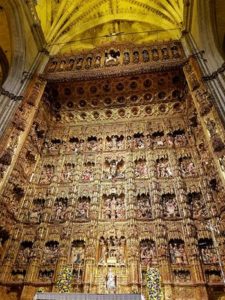
The art historian, José Gestoso y Pérez has expressed that ” The Spirit pales when considering the presumptuous prodigious material work and inventiveness which truly represents the world of art, its colossal proportions, the attention and dedication to its carvings, the infinite enriched details which escape the most penetrating eye and the exquisite taste in this work produces an utter awe.” Continue reading “Altarpiece of the Cathedral of Seville”
Guild of Silk – Écija
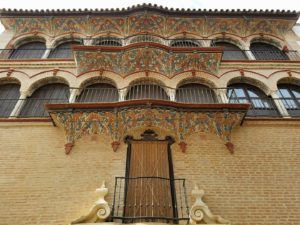
The House of the Guild of Silk dates back to the XVIII century originally built in the Baroque style. In its facade we can observe the exterior open arches and baseboards ornamented with paintings “al fresco” which were recently restored. This building was erected primarily the main location for trade for the territory, nationally and even foreign. The silk and linen industry was a most prosperous one for the city of Écija.
